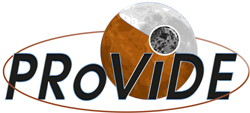The begin of this decade has seen marked developments in web based GIS (Geo-Information Service). Barriers for entry have lowered, allowing complex datasets to be visualised online by professionals and the public alike. It is essential that incoming data is GIS-capable to enable it to be efficiently retrieved, viewed, analyzed, compared and layered for research and wider dissemination. Indeed, GIS should be seen as the backbone of any research involving data with a spatial component. Once organized spatially, the level of flexibility acquired in the data allows efficiency in management, time and cost as well as ease of updates within a multilayered database. A web based GIS allows many advantages, not least the ability to collaborate across multiple sites and open up the ‘wisdom of the crowd’ for converting and analyzing vast datasets. It also allows the seamless integration of existing data, building on previous research and online systems already in place.
The guiding principle of the PRoGIS (A Web Tool to Understand and Process mars Rover Imagery in a Planetary Context) interface (Figure 11) is the map as primary element – the spatial view is the primary view. The aim is to try to reduce the burden on the user to understand and remember mission-specific detail of site & sol number ranges, etc., to be able to data relevant to a location. In theory a user with some familiarity with Google Maps hase suitable basic knowledge to interact with PRoGIS 1 to find and query MER data holdings.
Figure 11: The PRoGIS interface, showing the map interface to the Opportunity rover track related to HiRISE imagery (left), and (right) details of a rover site, the data grid-view of images and an analyph of a selected image pair.




